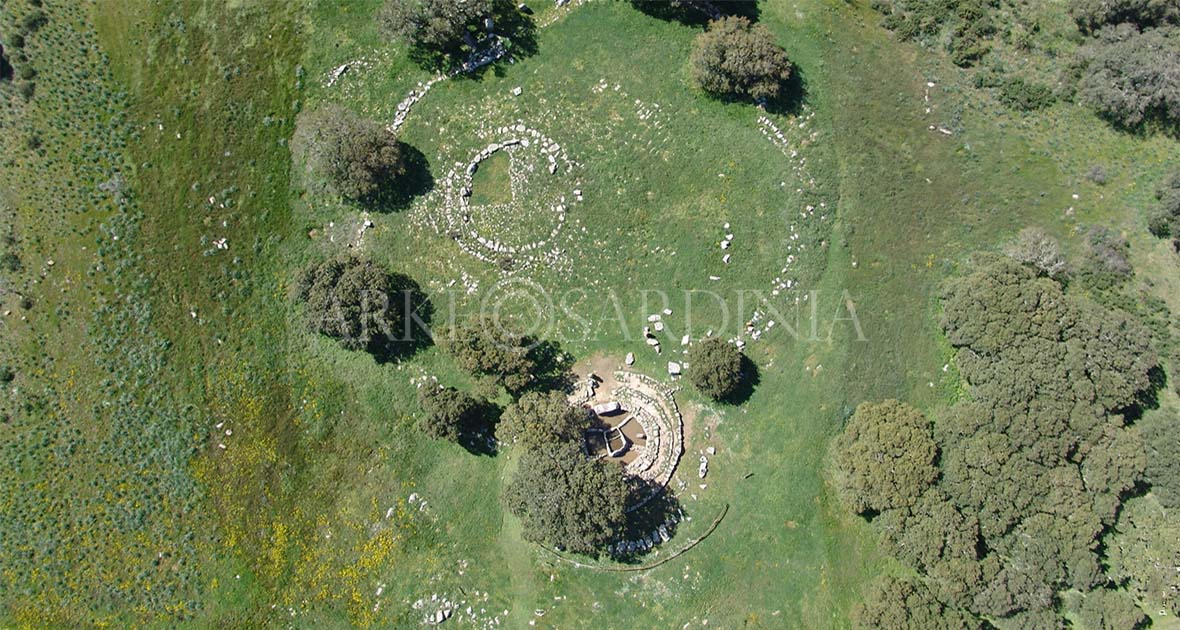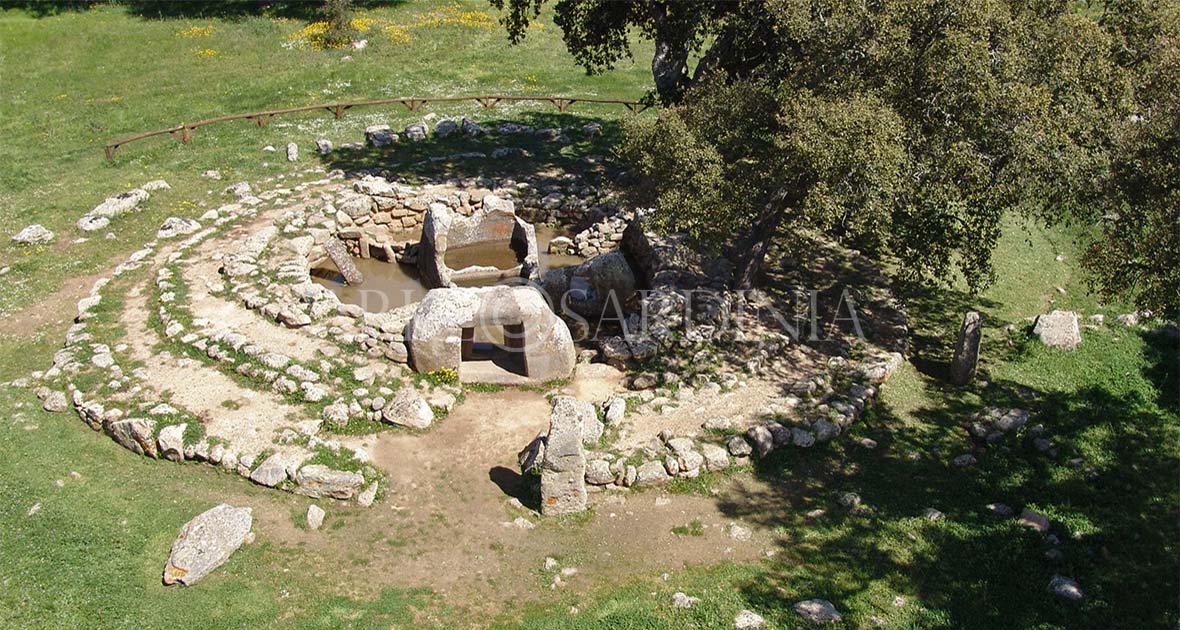Once again we move beyond the strict boundaries of the nuraghic period, which is the focus of our journey. We throw a glance farther back in time because just as we all have a history so did the nuraghic peoples. The site is dated between the Late Neolithic (3200 – 2800 BC) and the Early Chalcolithic (2800 – 2600 BC), as is shown both by the typologies of the tombs and by the finds of funerary goods. One of its most fascinating features is its ‘forest’ of menhirs arranged in lines and pairs, or set close to the tombs, protecting the necropolis. The tombs were constructed in the local sandstone and consist of two or three concentric circles of stone. In some cases the burial mound is supported by a stone border laid out in large steps. The grave chamber is placed at the centre of the structure. The prevailing construction technique is sub-cyclopean, i.e. using large, roughly fitted stones. Entry is through a stone corridor consisting of upright stones – in some cases menhirs – roofed with flat slabs. Tomb No 2 is especially interesting: it is made of two huge stone blocks into which the burial chambers were cut. The menhirs clearly had symbolic-religious significance, following a practice also found in other areas of Europe.
Guided visits
Loc Pranu Muttedu - Goni
T
070/982059
www.pranumutteddu.com
E-mail:
pranumutteddu@tiscali.it
Services offered
• guided visits
• tour packages
• foreign language assistance
• access for people with disabilities
• educational activities
• vehicle access
Caricamento mappa...
Tag
Local attractions









